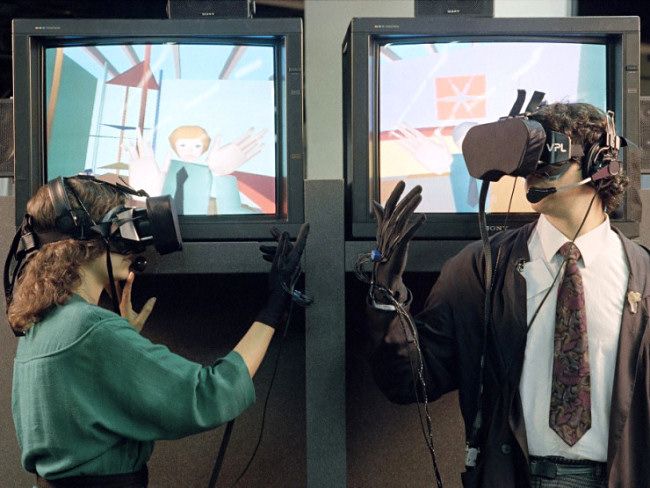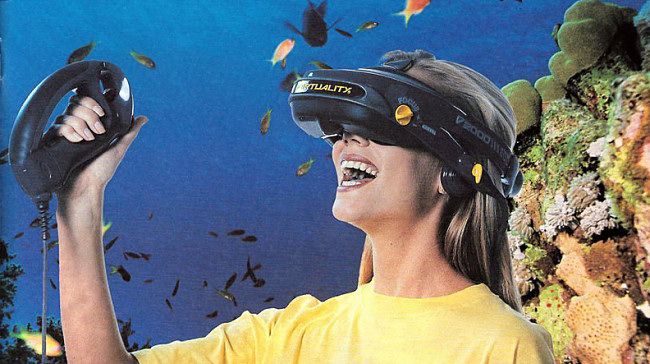
The Metaverse: Not Yet a Reality

The Metaverse: Not Yet a Reality
Quick Links
- The Nebulous Nature of the Metaverse
- Missing: The Nuts and Bolts of The Metaverse
- Is There an Actual Need for the Metaverse?
- The Uncertain Now and the Unknowable Future
There’s a lot of talk about the metaverse in the media these days, but there’s only one problem: It doesn’t exist—at least not yet. How will we know when it’s actually here? We’ll explore the possibilities.
The Nebulous Nature of the Metaverse
Before we can know whether the metaverse exists or not, we have to know exactly what it is. The truth is that “metaverse” is a nebulous term without a solid definition. As we’ve explored on How-To Geek before , the term “metaverse” originated in the 1992 novel Snow Crash by Neal Stephenson, but the concept has taken on a commercial life of its own during the past year due to the tech industry’s push for the next big thing—and especially Facebook changing its company name to Meta .
Related: What Is the Metaverse? Is It Just Virtual Reality, or Something More?
In general, people take “metaverse” to mean a network of interconnected virtual worlds where people can communicate, do business, and play different games together. Whether those worlds can exist on a device with a 2D screen (such as a smartphone), in virtual reality (VR) , augmented reality (AR), or all of the above is still up for debate.
What exactly the metaverse encompasses is also up in the air. Some people claim that current virtual spaces like Minecraft and Roblox are already metaverses, while others claim that there can only be one metaverse (as with “the internet”) and that platform-independence is paramount in defining what a metaverse is. Some people, such as Epic Games CEO Tim Sweeney, think the metaverse should exist as an open standard , while others think there might only be competing metaverses controlled by different companies.

Benj Edwards / How-To Geek
One thing’s for sure: If any online world where people can chat as avatars counts as a metaverse, then we’ve had those since at least the 1980s for 2D worlds and the 1990s for 3D ones . Heck, Second Life is here today—you can own virtual property, exchange virtual items, and more. Is that the metaverse? (Its creator doesn’t think so .)
But multi-user VR chat isn’t what the current hype is about: It’s really about a successor to the internet -–a new global economic playground that could supposedly help tech businesses accumulate astonishing new wealth .
So we’ll define the metaverse as, roughly, a network-connected VR multiverse that isn’t owned by one company alone. That technology might exist in a development stage at the moment, but it is not currently widely implemented, and no industry-wide standards are set.
Missing: The Nuts and Bolts of The Metaverse
In his Facebook Connect 2021 keynote , Oculus consultant John Carmack said that “The metaverse is a honeypot trap for architecture astronauts ,” warning about engineers and designers who take an abstract, high-level view of things and don’t worry about the “nuts and bolts” of making it a reality. He also cautioned for a products-based approach to the metaverse (citing Meta’s Horizon Worlds VR chat app) rather than spending a lot of effort defining an architecture that may end up not being used at all.

Meta
And that’s the main problem with the metaverse right now: the nuts and bolts aren’t there. The fundamental technologies that would let people chat, own property, and do business across platforms and devices in a 3D virtual world have not been standardized in a way that makes it possible. To make it happen, it will take widely-adopted communication protocols that don’t exist and reinterpretation of intellectual property law .
Related: The Foundation of the Internet: TCP/IP Turns 40
If companies and people want to do business in a shared virtual space today, they use the internet. The internet is built on open standards such as TCP/IP that don’t belong to any one company or government. Some successful applications built atop it—like the World Wide Web -–also use open standards. The vision of the shared, singular metaverse championed by people like Epic CEO Tim Sweeney will need similar open standards to make it a reality.
Historically, when a new technology emerges (like television , VCRs , CD-ROM , HDTV ), there might be competing implementations at first, but ultimately the market will solidify around a solid contender that becomes a standard, whether through licensing, open technology, or a government mandate. Sometimes companies will work together to define an industry standard to further everyone’s goals by making some basic aspects of the technology interoperable between vendors.

Has any one of those three scenarios (licensed standards, widely-adopted open technology, government mandate) happened with the metaverse yet? Signs point to no . That’s the surest indicator that the metaverse, as promised, does not yet exist.
Intellectual property will also be a huge barrier to an open, interoperable metaverse. In real life, you can own a t-shirt with a Star Wars logo on it and carry it with you wherever you go, or sell it whenever you like. In a digital space, your possession of a virtual Star Wars t-shirt would either be copyright infringement or the result of an IP license.
Who can buy the digital shirt from you? Will Disney get a cut? Can the Star Wars t-shirt exist on hypothetical metaverse servers run by Epic Games, Roblox, and Microsoft alike? All these problems need to be solved and agreed on by everyone—governments, companies, and regular people—before a true metaverse can take hold. And there might never be any commercial incentive to make this kind of IP interoperability happen.
Related: The First Website: How the Web Looked 30 Years Ago
Is There an Actual Need for the Metaverse?
With the limitations we’ve discussed, does that mean the metaverse will never exist? No—it might very well become the way of the future. But our current vision of it might also never come to pass, since the industry seems to be coming at it from a top-down rather than a bottom-up approach .
With how companies like Meta define the promise of the metaverse today, it feels like a solution in search of a problem, rather than a solution that emerged organically from a legitimate market need. And that’s another concern John Carmack expressed in his Connect keynote: “I have pretty good reasons to believe that setting out to build the metaverse is not actually the best way to wind up with the metaverse.”
Instead, while Carmack says he “[buys] into the vision” of the metaverse, he argues for letting the metaverse grow and emerge organically from a needs-based approach rather than attempting to set out and build a grand vision just because a company thinks it’s the way of the future. “My worry is that we could spend years—and thousands of people possibly—and wind up with things that didn’t contribute all that much to the ways that people are actually using the devices and hardware today,” he emphasized.

NASA
There’s an argument that approaching a perceived problem from the top-down usually ends up in failure. For example, if you want to order a pizza online, would it really be better to walk into a virtual store with a VR headset and pick up a 3D pizza—or just tap in an order through a smartphone app?
According to people who sell VR headsets (their example is selling scented candles ), the first scenario might be best. But when the rubber meets the road, most people will probably just order a pizza through an app or web browser because it’s quicker. The same principle—that 3D VR just complicates things—might be extended to many potential commerce applications of the VR-based metaverse.
When humans invented powered flight, we didn’t duplicate how birds fly by designing elaborate wings that flap (although some tried). The successful approach found a different way to achieve flight with the tech we had available at the time.
The Uncertain Now and the Unknowable Future
Even the criticism presented here shows another problem with the metaverse concept. We’re trying to guess how it will work instead of letting it happen naturally, and we’re projecting applications of our imperfect, incomplete VR tools of today into an unknowable future.
Augmented reality , which overlays computer-generated imagery on your view of the real world, holds a different promise than VR delivered through today’s cumbersome VR headsets. For example, in AR, that pizza ordering app could be a pop-up 2D window floating in front of your face while you sit on the couch. Over time, the hardware will slim down and likely become as light as a pair of glasses, but that might be a decade or more off. By then, will we still be talking about the “metaverse?”

So why the push for the metaverse? Much of the media narrative right now is being driven by Facebook’s recent name change to Meta. As some have cynically noted, the change could be a calculated distraction from growing international pressure to regulate social media . It could also be a play for Meta to own a large chunk of the next phase of the future internet, or a way to justify Meta’s $2 billion acquisition of Oculus .
For Epic’s Part, Tim Sweeney sees the metaverse as an inevitable extension of the technology found in Fortnite, and he wants to use it to break free of the current “walled garden” online model largely controlled by Facebook, Google, and Apple. In other words, it’s a grand vision that also happens to further Epic’s interests. That’s OK for Epic, but is it where the world wants to go?
Either way, we’re all buzzing about a new thing that no one can clearly define—something that’s either already here and mundane or far off and world-changing. It’s a good argument to abandon the “metaverse” label altogether.

Virtuality
The tech industry—and the media, hand-in-hand—have a history of pushing buzzy things long before they’re ready or practical, such as AI in the 1980s and VR in the 1990s . Currently, the metaverse seems to be the latest in that long and proud tradition.
But even when the smartest people try to predict the future , the results often seem embarrassing in retrospect. With that in mind, we can’t say the metaverse will never become real. All we can say is that it’s not real right now. So take all the buzz with a grain of salt.
Also read:
- [New] 2024 Approved Engineering A Memorable TikTok Close Screen
- [New] In 2024, Precision in Portability The Ultimate List of 35 Free Android Video Compressors
- [Updated] 2024 Approved Access Top Shorter Video Downloads for FREE Online
- [Updated] In 2024, Professional Take The Syma X5C – Ideal First-Timer's Droning Companion
- 「PC上で外部オーディオを記録するためのステップバイステップマニュアル」
- 【マルチメディア管理】Windows 10上で動画結合の詳細な手順とテクニック
- 4 Ways to Transfer Music from Oppo Find X7 Ultra to iPhone | Dr.fone
- Fixing Muted Combat: Experts' Guide to Reactivating Apex Legends Audio
- Ultimate 2024 Guide to Converting MP4 Videos to VOB on PC/Mac and Online Tools: The Top Five Strategies
- Ultimate Guide to the Most Effective MTS Video Editor Software on Windows
- Ultimate Guide: Amplify Your Sound with VLC's Volume Enhancer
- Ultimate Tutorial on Converting Your SWF Flash Videos Into High-Quality MP4s
- Ultimate Tutorial: How to Download and Save Your Favorite BeatStars Songs as MP3 Files
- Unleash Creativity YouTube Studio Editor Secrets Revealed
- Unlock Top 5 Must-Try iOS 18 Accessibility Enhancements for an Effortless User Experience
- Title: The Metaverse: Not Yet a Reality
- Author: Jeffrey
- Created at : 2024-11-17 23:55:44
- Updated at : 2024-11-18 18:27:23
- Link: https://tech-haven.techidaily.com/the-metaverse-not-yet-a-reality/
- License: This work is licensed under CC BY-NC-SA 4.0.